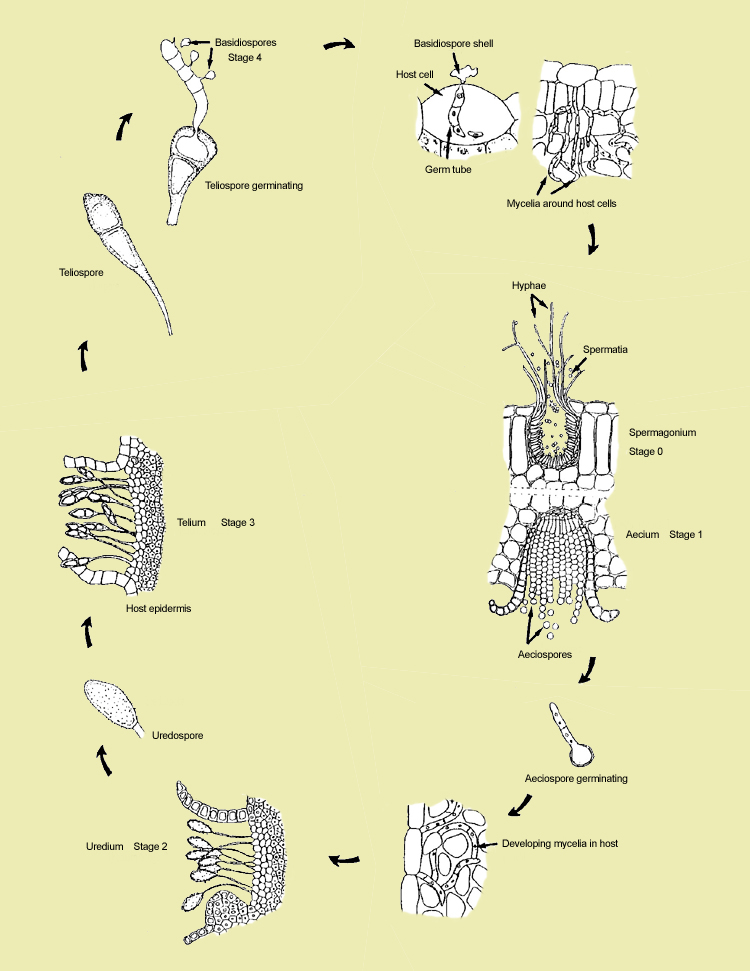The full life-cycle of the candidate pathogen should be determined so that the host of each spore type can be accounted for. If there are missing links, these need to be found, or a sound theory explaining why various stages are not present needs to be formulated.
The rust fungi can have up to five different spore stages (See Figure
below). An individual life-cycle may have all or only some of these. For example, the rust Phragmidium violaceaum has all spore forms, but
Puccinia xanthii has only teliospores and basidiospores.
While some rusts do have a full life-cycle, all stages may not be present in the field. Only the uredinial and telial stages of
Puccinia abrupta var. partheniicola have been found in the field in Mexico. While the teliospores are functional, germination has only been observed in the laboratory after dormancy had been broken by chemical treatment. The rust appears to cycle in the field by the urediniospore stage only. These spores have the ability to remain dormant over winter while retaining their viability.

[ Back ] [ Next ]
Allan
Tomley

